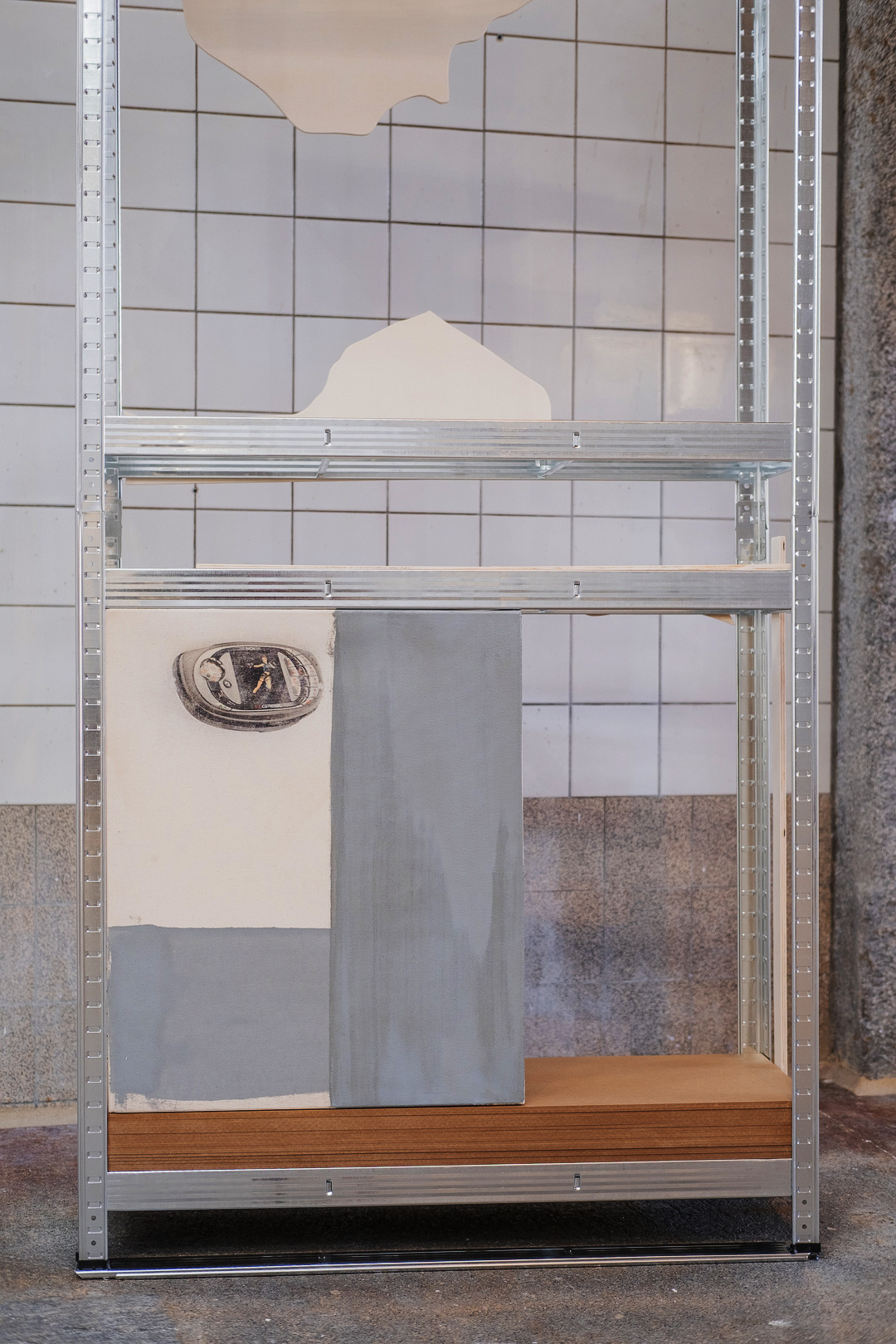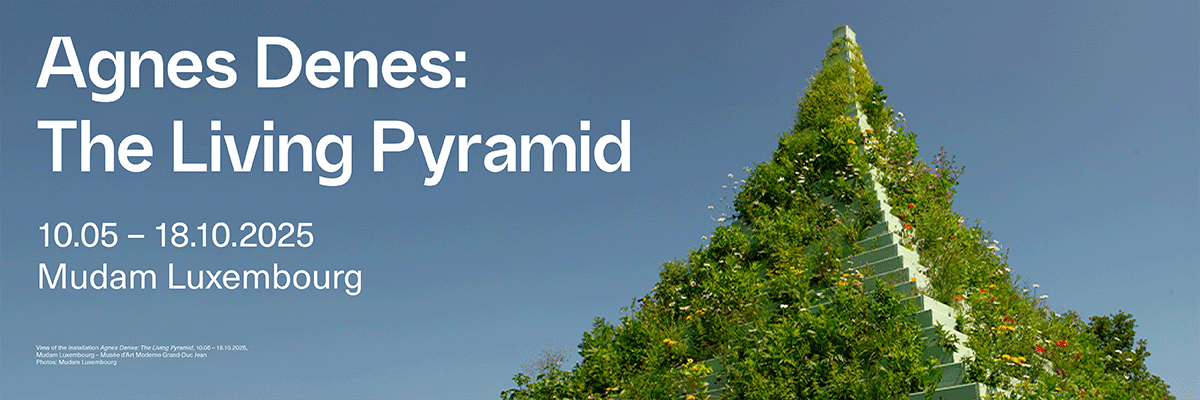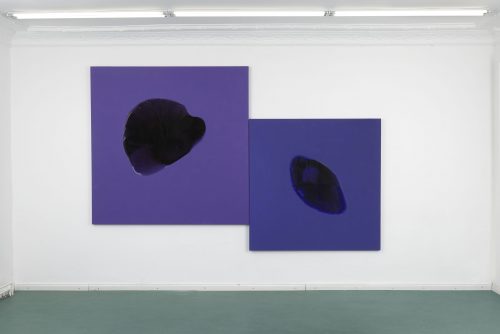
Simone Nicola Filippo
Tour Bonheur
Project Info
- 💙 Quartier Général
- 💚 Clarissa Fornara, Morgane Paillard, Azul Joliat
- 🖤 Simone Nicola Filippo
- 💜 Clarissa Fornara, Azul Joliat
- 💛 Max Gigon Adatte
Share on

Artwork_Simone-Nicola-Filippo_01
Advertisement

Artwork_Simone-Nicola-Filippo_02

Exhibition_view_01

Exhibition_view_02

Exhibition_view_03

Artwork_Simone-Nicola-Filippo_03

Artwork_César-Axel-GA_01

Artwork_Tudor-Ciurescu-GA_01

Artwork_Simone-Nicola-Filippo_04

Artwork_Simone-Nicola-Filippo_05
Room text by Clarissa Fornara (Co-director) and Azul Joliat (Art Historian)
Translated from French to English
The mere mention of Club Dorothée (French television programme aimed at young people in the ‘90s), Dragon Ball or Naruto resonates with fervour for a whole generation. In fact, since the ‘70s, Japanese anime, in constant exchange with the world of manga and video games, has been spreading like wildfire in the West. Today, the otaku - the name given to people with a passion for this type of sedentary activity - is no longer a strange, isolated being. On the contrary, it has become a way of life in its own right, with a wealth of narrative, artistic and social content. Beneath their light-hearted or fantastical appearances, these works are in fact captivatingly complex, full of double meanings and contemporary reflections on issues such as gender, social cohesion and formative narratives. Born of a Japanese tradition combining humour and absurdity, manga readily alternates tones, from the serious to the caricatured, from the explanatory to the dramatic. This dual register fuels the identification process, particularly among young audiences.
By reappropriating the codes of this medium, Simone Nicola Filippo pays tribute to this particular world and its aesthetic, while at the same time drawing attention to some of the issues it raises. It's all in the title. ‘Tour Bonheur’ [French, = Joyous Tower, or Happiness lap] not only recalls the joys experienced by the author-gamer during his virtual journeys, but also constitutes a pointed reference to the Pokémon universe; a secret and difficult-to-access dungeon that only a seasoned player is likely to find. In choosing this name, in making Quartier Général his tower of happiness, the artist has also crystallised a central element in his thinking: the disappearance of the boundary between the fictional and the concrete. In the exhibition space, there are no walls. Metal shelves take the place of picture rails, revealing the emptiness, while subtly evoking open-space layouts, where boundaries are blurred and hierarchies are hard to perceive. This scenographic gesture metaphorically (de)materialises the demarcation between the virtual world and the real world. By moving these fictitious figures into our physical reality, the painter highlights the crumbling of this boundary and the fantasies and imaginations held by and about these characters. Depicted in the form of silhouettes, reminiscent of promotional cards bearing the effigy of film stars, these figures accentuate this dimension of fan-idol fascination. This highlights the phenomenon of parasocial relationships: the emotional bonds that fans develop with fictional characters. These unilateral attachments can reveal loneliness, emotional deprivation or a form of nostalgia linked to childhood and play. They also question our relationship with unattainable desires and idealised models. Simone Nicola Filippo has selected various female figures from video and animated games to illustrate the contradictions in their representation.
At first glance, they have characteristics that seem to defy gender stereotypes, but as the narrative or the game progresses, they fall back into a standard straitjacket. From being strong, independent heroines, they strip naked to reward the player. From neutral figures, they acquire benevolent, maternal behaviour. And finally, the mother figure progresses into a hypersexualised version of herself. These characters reveal a constant tension between power and submission, autonomy and eroticism. What expectations do these developments meet? How are they received and integrated by readers and players? By exploring the tensions between fiction and reality, identification and idealisation, Simone Nicola Filippo does more than pay tribute to otaku culture - he offers a critical and nuanced reading of it. Through his aesthetic and symbolic choices, he invites us to question our relationship with the images, stories and figures that populate our collective imagination. "Tour Bonheur” then becomes not only a place for projection, but also a space for questioning the place of the virtual in our lives, the models we construct, and the way in which these fictions influence, sometimes profoundly, our identities and our emotions.
Tudor Ciurescu and César Axel, both members of the trio General Aesthetics - formed in 2023 with Simone Nicola Filippo - have been invited by the artist to take over the exhibition space. Their work and reflections revolve around common themes: the dynamics of digital spaces, the aesthetics of online communities and the world of anime.
Clarissa Fornara, Azul Joliat




